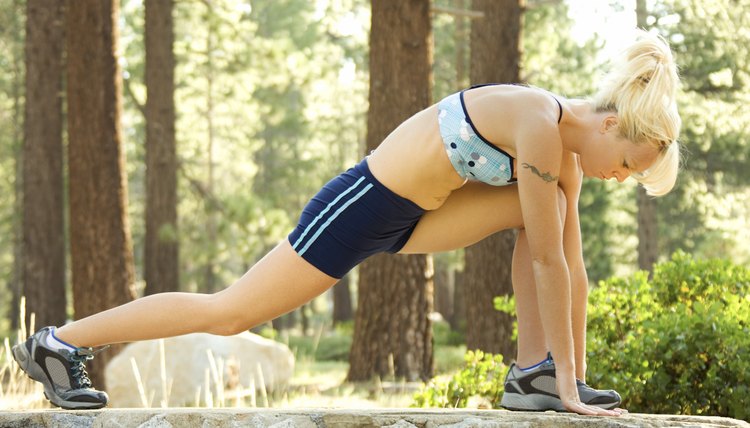Muscles That Are Prime Movers

The muscles that play the primary role in moving a body part are formally known as agonist muscles and are often referred to as prime movers. Although they are categorized as prime movers for their contracting action, the same muscles can also extend. These major muscles include the pectoralis major, deltoid, latissimus dorsi, gluteus maximus and quadriceps.
Pectoralis Major
You are likely to know the pectoralis major as simply “pectorals” or even as just “pecs.” There’s one on each side of your upper chest, where they are responsible for flexing and adducting -- pulling toward your body -- the arms, as well as rotating them.
Deltoid
You are able to move your shoulder joints thanks to the deltoid muscles in each of them. The deltoids are divided into three sections -- anterior, posterior and medial -- and the main function of the set is to draw your arm away from your body, an action also known as abducting the arm. You’ll notice that when you activate your deltoids, your pectorals also come into action. Both prime movers collaborate to give movement to your upper body.
Latissimus Dorsi
The latissimus dorsi covers the broad area that makes up your lower and middle back. This large muscle pulls the extended arms back to the side of the body. When you raise your arms out in front of you, your latissimus dorsi also makes it possible for you to bring them back down in reverse. Despite being a back muscle, you’ll see that when you engage the latissimus dorsi to move your arms, your shoulder joints also leap into action.
Gluteus Maximus
Your gluteus maximus, commonly known as the buttocks or glutes, extends the hip joints to allow your thighs to rotate laterally. This long prime mover also makes it possible for you to move your thighs away from your body while keeping your extended knees stable.
Quadriceps
The four muscles that run on the front of each thigh, three to the knees and one over the hip joint, form the group of prime movers called quadriceps femoris -- the quads. Together, the rectus femoris, vastus medialis, vastus intermedius and vastus lateralis extend the knees. Because of its position across the hip joint, the rectus femoris also flexes the hips.
References
- We Move: Overview of Muscles
- NASM Essentials of Personal Fitness Training; Micheal A. Clark, et al.
- KidsHealth: Your Muscles
- Loyola University Medical Education Network: Pectoralis Major
- Wheeless' Textbook of Orthopaedics: Deltoid Muscle
- BodyBuilding.com: Effective Back Training: “The Lats”
- ExRx.net: Gluteus Maximus
- GetBodySmart: Gluteus Maximus Muscle
- Dance Anatomy and Kinesiology: Principles and Exercises for Improving Technique and Avoiding Common Injuries; Karen Sue Clippenger
Writer Bio
Emma Watkins writes on finance, fitness and gardening. Her articles and essays have appeared in "Writer's Digest," "The Writer," "From House to Home," "Big Apple Parent" and other online and print venues. Watkins holds a Master of Arts in psychology.
